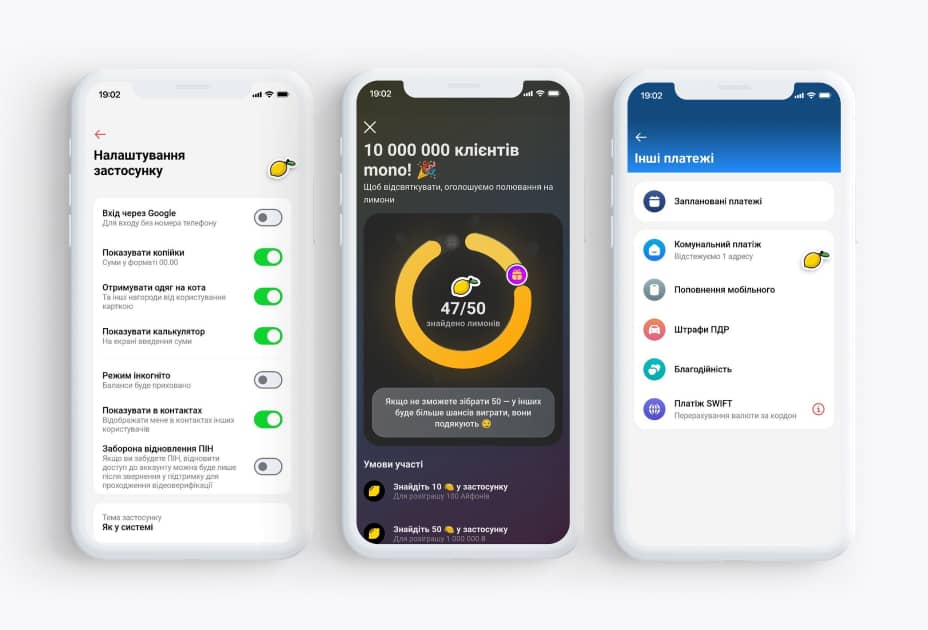monobank, one of Ukraine's most innovative digital banks, recently launched its 'Hunt for Lemons' campaign, where millions of users searched the app for hidden digital lemons to win prizes. But this campaign turned out to be not just about marketing—it became a massive, real-world experiment in user behaviour, system resilience, and quality assurance. We spoke with Ostap Elyashevskyy, to explore the implications of this approach for QA and product testing.

Background & experience:
- Over 17 years of experience in software development and testing. Currently leads R&D activities, provides expert consulting, and manages talented engineers.
- Developed test frameworks using C#, Java, Python, and JavaScript/TypeScript for a wide range of applications.
- Taught Java and JavaScript Test Automation courses and mentors aspiring professionals.
Let’s start with basics, what is monobank and what does its 'Hunt for Lemons' campaign entail?
Ostap Elyashevskyy: Over the past few years, monobank has become one of the most innovative digital banks in Ukraine. It built not just a mobile banking app, but a full-scale digital ecosystem that people genuinely enjoy using. The app is fast, packed with features, and surprisingly engaging—from managing cards and savings to investing, donations, and even mini‑games.
With over 10 million clients, monobank set a new standard for how fintech can blend technology, design, and human emotion into one experience and launched the 'Hunt for Lemons' campaign. The bank created an interactive game within the application. The main goal was to find ‘lemons’ icons hidden in various sections of the bank’s application.
What first looked like another viral marketing stunt: find lemons in the app, win iPhones, a million hryvnias, or even a BMW, was far more interesting than the prizes themselves. It turned into a massive, real-world experiment in user behaviour, system resilience, and gamified learning.

The monobank app interface during the 'Hunt for Lemons' campaign
What made monobank's campaign so significant from a QA perspective?
OE: First of all, this is an illustrative example where gamification intersects with large-scale behavioural testing. Millions of users rushed into the monobank app simultaneously, exploring every corner in search of digital lemons hidden across settings, statements, and payment categories.
The load on monobank’s servers skyrocketed, bank’s team reported a significant increase in system load than any previous peak. Some users faced delays, temporary login issues, or unresponsive menus. Yet most weren’t frustrated—they were excited. From a broader perspective, such viral campaigns can act as spontaneous UX and load tests, revealing how real users behave under excitement-driven pressure.
What specific benefits did this approach deliver compared to traditional load testing?
OE: In a single campaign, monobank achieved what would normally require huge QA budgets and specialised teams. Instead of focus groups, they got real user maps of ‘blind zones’. Instead of banner ads, they increased feature engagement and user loyalty. Instead of costly testing environments, they got live performance data at a scale. And they turned millions of clients into motivated testers.
The surge in traffic revealed how the app behaves under extreme load. Any QA engineer knows that simulating such conditions in a controlled environment can cost hundreds of thousands. Here, monobank got the same outcome for the price of a few prizes—an incredible ROI. Every temporary slowdown or error was valuable data that will make the next version more resilient.
Could this concept be formalised into professional QA practices?
OE: Absolutely. Imagine bringing this idea into professional QA. A testing framework that hides ‘lemons’, like intentional bugs or tasks, inside an application build. Testers can’t deploy to production until they’ve found all ‘lemons’ and all tests passes. This concept could merge gamification with quality assurance, turning test discovery into an engaging challenge rather than a routine task.
What monobank did was more than just a game. It was a signal: the future of testing may be playful, social, and driven by real human curiosity—not just scripts and tools.
What insights can QA and businesses gain from this campaign?
OE: monobank’s campaign blurred the line between marketing and testing. It showed that the most effective QA sometimes happens not in the lab, but in the real world—when users are genuinely engaged. For QA leaders, it’s a reminder that gamification can teach users, test systems, and strengthen loyalty all at once. And for businesses, it’s proof that testing can be not only efficient, but inspiring.
Interestingly, this kind of engagement can also organically increase product awareness. Without being explicitly guided, users end up discovering features they might never have opened—from the marketplace and insurance offers to phone top-ups and other services hidden beyond the main dashboard. In other words, the campaign not only stress-tested the infrastructure but also educated millions of customers about the bank’s ecosystem, which could indirectly translate into higher revenue and deeper product adoption.
At ELEKS, we occasionally organise Test Rush events with a similar spirit. These are short, high-energy sessions where people who don’t work on the project join in to test the product from a fresh perspective. This often helps uncover bugs, usability issues, and unexpected behaviours that project teams might miss. It’s a simple yet powerful reminder that collective curiosity can be one of the best testing tools.

FAQs
Gamification in software development is all about adding game-like elements to regular software to make things more fun and engaging for both users and developers. This can include things like points, badges, leaderboards, and challenges that motivate people to write better code, finish tasks, or pitch in on projects. The idea is to turn boring routines into something that grabs your attention, boosts productivity, encourages teamwork, and makes everyone feel more accomplished and invested in their work.
According to Richard Bartle's taxonomy, there are four main types of gamification based on what motivates people:
- Achievers - those driven by points and progress.
- Explorers - motivated by discovering new things.
- Socializers - who enjoy collaboration and competition.
- Killers - those motivated by competition and winning.
Related insights








The breadth of knowledge and understanding that ELEKS has within its walls allows us to leverage that expertise to make superior deliverables for our customers. When you work with ELEKS, you are working with the top 1% of the aptitude and engineering excellence of the whole country.

Right from the start, we really liked ELEKS’ commitment and engagement. They came to us with their best people to try to understand our context, our business idea, and developed the first prototype with us. They were very professional and very customer oriented. I think, without ELEKS it probably would not have been possible to have such a successful product in such a short period of time.

ELEKS has been involved in the development of a number of our consumer-facing websites and mobile applications that allow our customers to easily track their shipments, get the information they need as well as stay in touch with us. We’ve appreciated the level of ELEKS’ expertise, responsiveness and attention to details.

